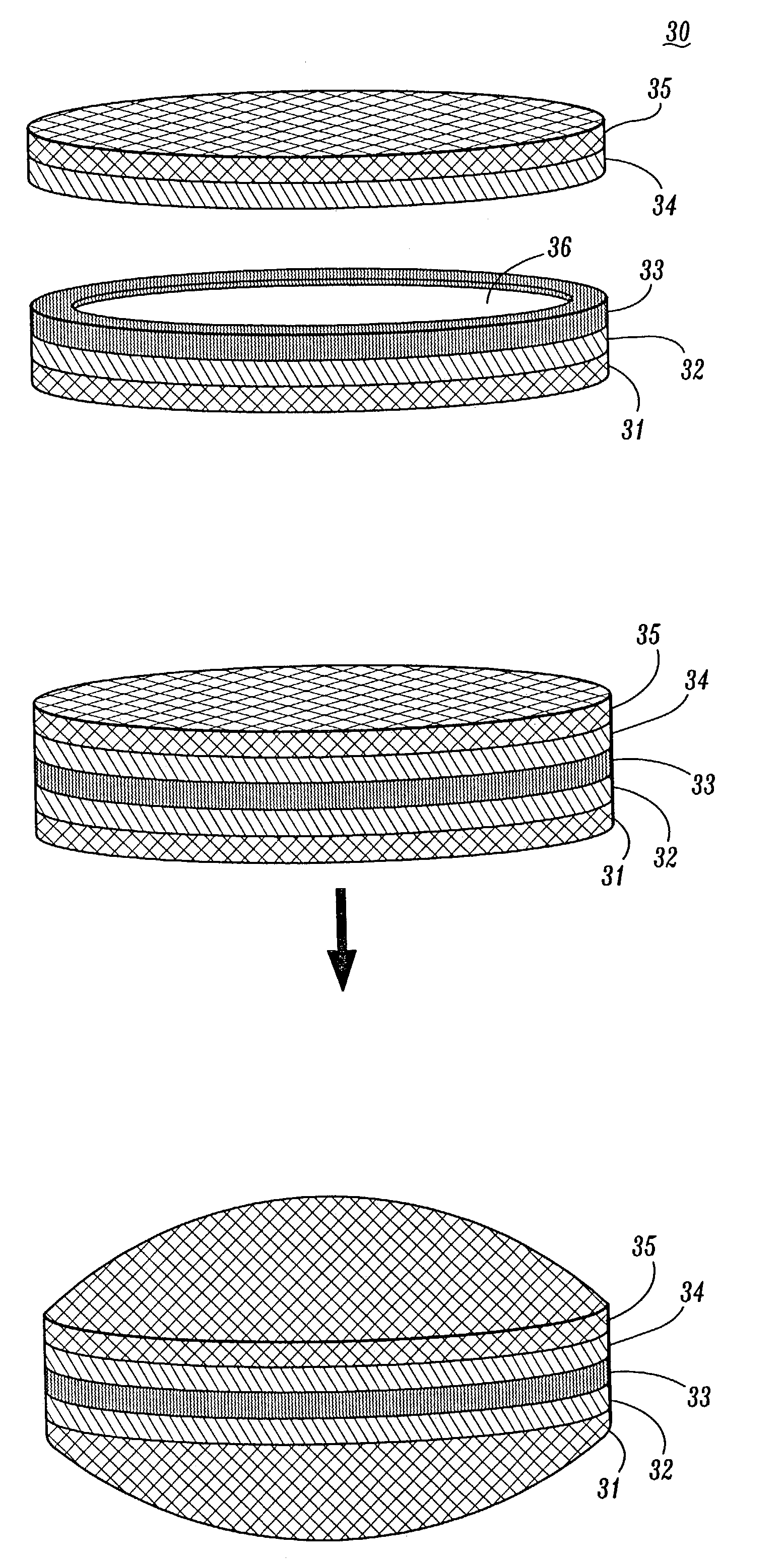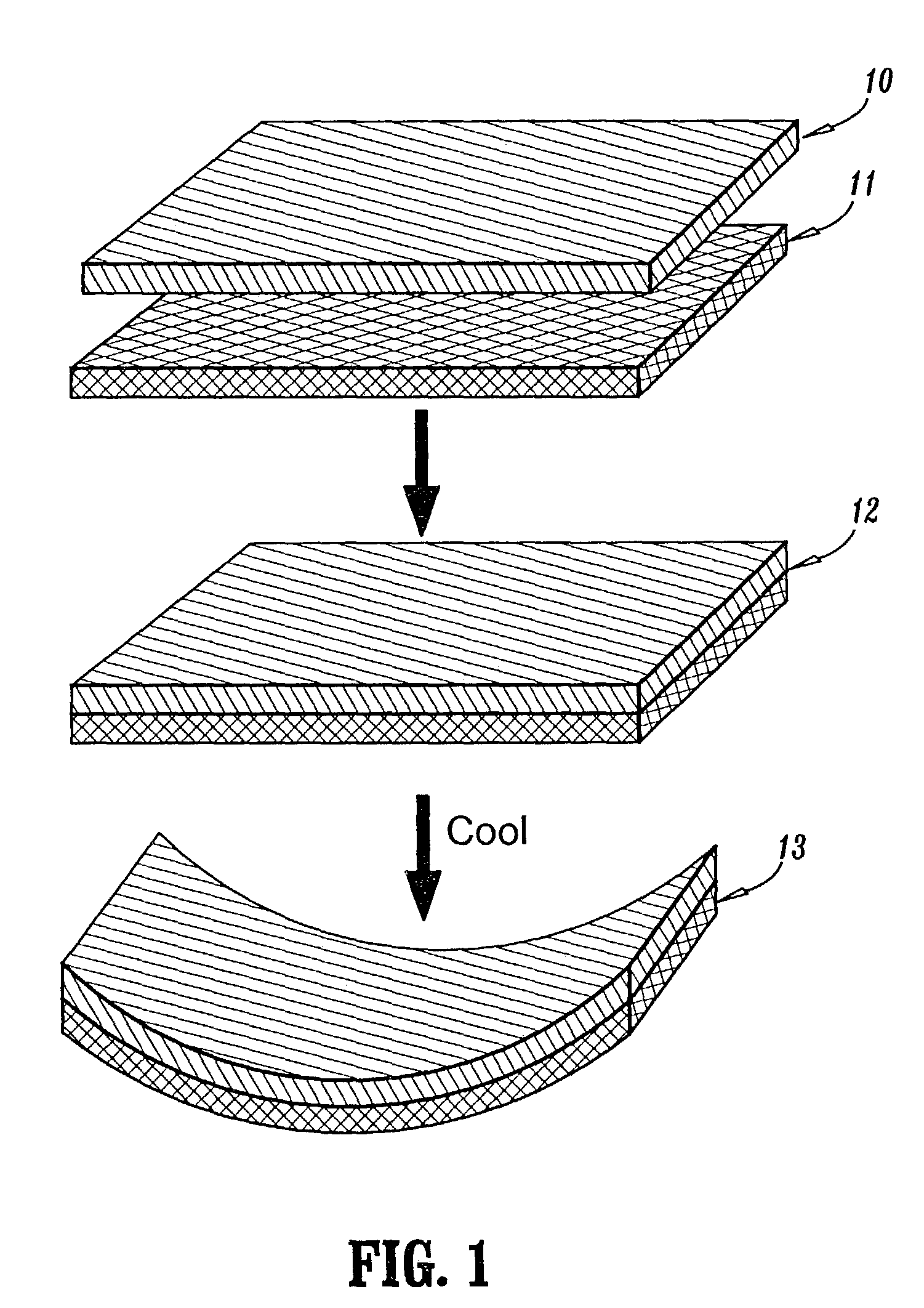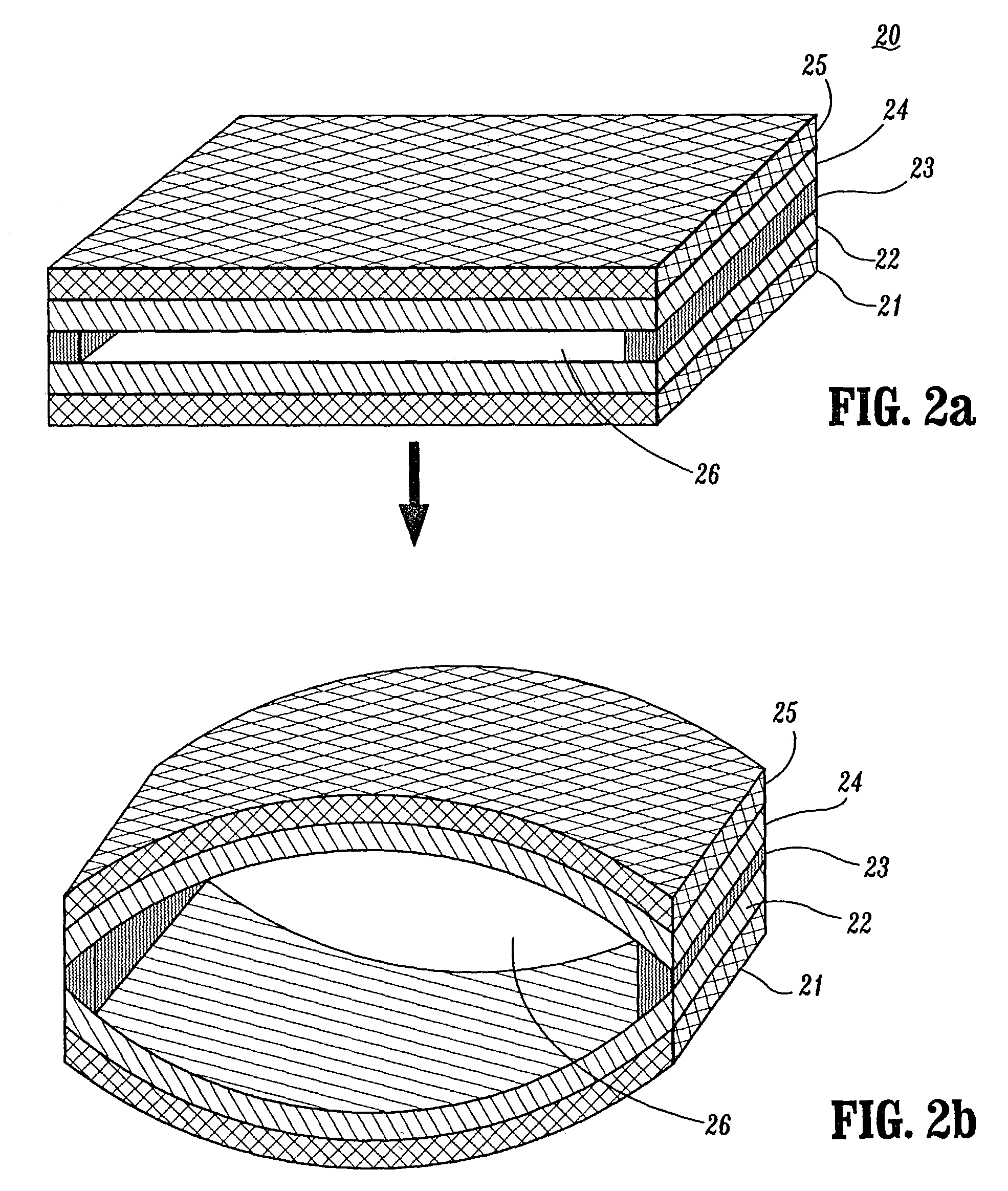Negative thermal expansion system (NTEs) device for TCE compensation in elastomer composites and conductive elastomer interconnects in microelectronic packaging
a negative thermal expansion system and interconnect technology, applied in the field of microelectromechanical systems (mems) processes, can solve the problems of tce mismatch problem, high stress between bonded parts or layers, limiting factors, etc., and achieve the effect of increasing the overall volume occupied and increasing the volume of the void
- Summary
- Abstract
- Description
- Claims
- Application Information
AI Technical Summary
Benefits of technology
Problems solved by technology
Method used
Image
Examples
Embodiment Construction
[0044]Preferred embodiments of the present invention now will be described more fully with reference to the accompanying drawings, in which preferred embodiments of the invention are shown. This invention may, however, be embodied in many different forms and should not be construed as being limited to the embodiments set forth herein; rather, these embodiments are provided so that this disclosure will be thorough and complete, and will convey the concept of the invention to those skilled in the art. In the drawings, the thickness of layers, regions, and devices are exaggerated for clarity.
[0045]According to a preferred embodiment of the present invention, miniature devices comprised of dual opposed bilayers of material where the two bilayers are attached to one another at the peripheral edges only, and where the bilayers themselves are at minimum stress conditions at a reference temperature defined by the temperature at which the bilayers were formed. These devices have the unusual ...
PUM
| Property | Measurement | Unit |
|---|---|---|
| operating temperature | aaaaa | aaaaa |
| temperature | aaaaa | aaaaa |
| thickness | aaaaa | aaaaa |
Abstract
Description
Claims
Application Information
 Login to View More
Login to View More - R&D
- Intellectual Property
- Life Sciences
- Materials
- Tech Scout
- Unparalleled Data Quality
- Higher Quality Content
- 60% Fewer Hallucinations
Browse by: Latest US Patents, China's latest patents, Technical Efficacy Thesaurus, Application Domain, Technology Topic, Popular Technical Reports.
© 2025 PatSnap. All rights reserved.Legal|Privacy policy|Modern Slavery Act Transparency Statement|Sitemap|About US| Contact US: help@patsnap.com



